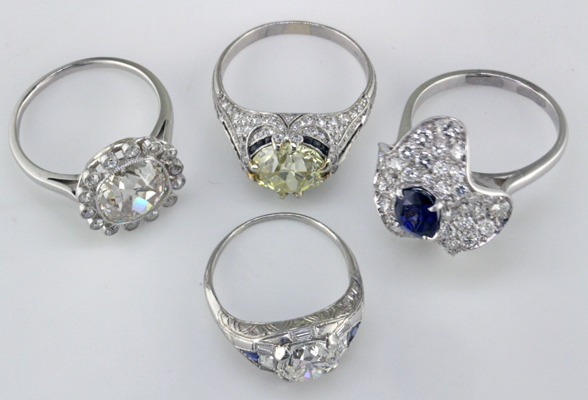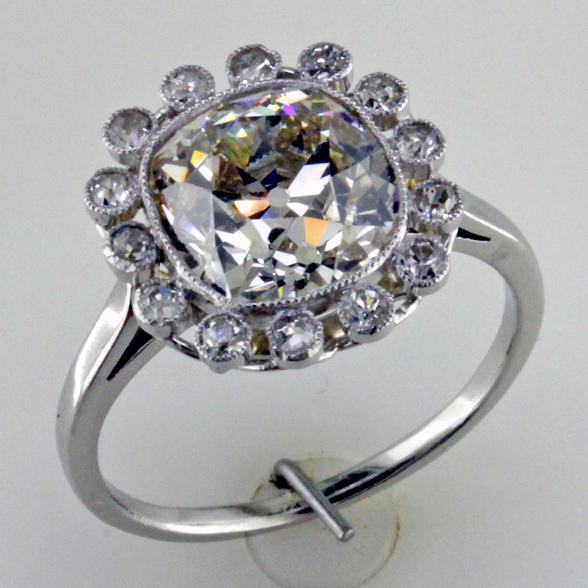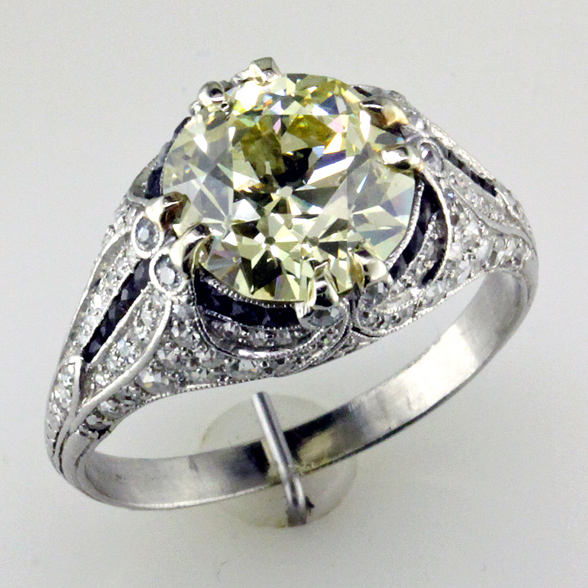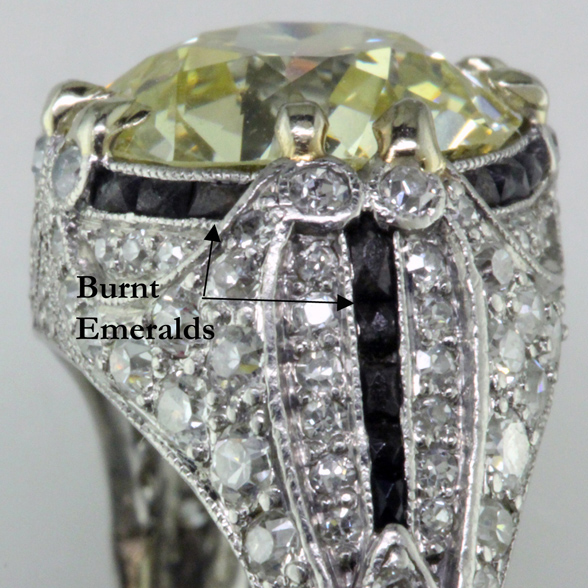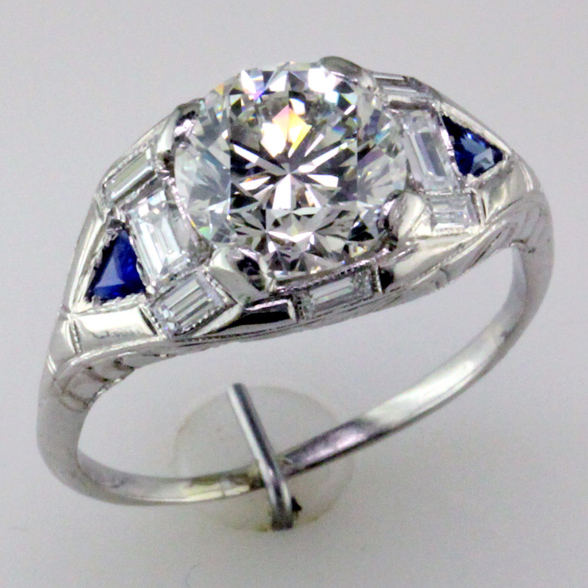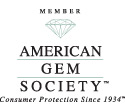Antique Jewelry Gets TLC
July 3rd, 2015 by James L. Sweaney, CGA, FGA. GGWe just acquired four wonderful antique and vintage rings which are, as they say, “Farm Fresh.” It’s often the case that estate pieces need TLC before they can be resold– they’ve been worn and loved for years! They’ll need restoration, refurbishing and GIA certifications to meet our standards for resale to our clients. Here’s what we do to bring these lovely pieces up to snuff and ready for a new home.
Ring #1 is a beautiful halo style platinum ring from the early 20th Century, circa 1900-1920. The ring is in good condition and won’t need much more than cleaning and polishing to be ready for the market, but the center stone is another story. It’s is a gorgeous Antique Cushion cut diamond that weighs 4.22 cts. Because the stone is so large and of good quality, we’ll have the stone graded at the GIA Gemological Laboratory.
Before the stone goes to GIA, we’ll send it to our diamond cutter who specializes in repairing damage. Even though they’re hiding under the bezel, we’ve noticed some minor chips around the girdle (edge) of the stone. This type of damage is typical of vintage diamonds because they often have very thin girdles.
A key factor here will be weight retention– it’s very important that the stone weight stays above 4 cts. The fair market value of a 4 ct stone can be 15% more than a stone weighing 3.9 ct, all other factors being equal. Once our cutter has had a chance to evaluate the repair, we’ll have a good idea of the final weight and can make an informed decision whether to proceed.
Ring #2 has several issues. The center Old European cut diamond weighs ~ 3.33 cts and is of excellent quality, so it should have GIA documentation. Like the stone in the first ring, it has some small chips around the girdle that should be repaired before going to the lab. The diamond has an attractive light yellow color– the key factor here is whether the color is rich enough to be graded Fancy Light Yellow. Our cutter may have some ways to enhance the color — we’ll keep our fingers crossed.
The ring itself is an attractive platinum Edwardian style from the Turn of the Century, made by T.B. Starr. Theodore B. Starr was a prestigious jeweler in New York City who partnered with Herman Marcus from 1864 to 1877. Starr & Marcus made pieces for notable firms like Tiffany, and later became part of another famous jewelry firm, Black, Starr, and Frost. T.B. Starr died in 1907, so we know this was one of his later pieces– platinum items aren’t seen much before 1900.
Unfortunately, the ring has significant damage– somewhere, sometime, a jeweler decided to install yellow gold prongs around the center stone. In the process of soldering on the new prongs, the small channel set emeralds were burnt almost to a crisp. Because the piece has provenance to a famous maker, we’ll attempt to replace the damaged stones. The process will be expensive and painstaking. The tough part will be finding matching the tiny calibre-cut emeralds– they’ll have to match measurements of the originals within 1/10 of a mm!
Ring #3 is a platinum ring in the Art Deco style. The center diamond weighs 2.00 cts, has good clarity and color, so it needs a GIA pedigree. It’s probably not the original stone– the cutting style is too modern for the ring setting, and the prongs don’t look original. We’ll have the stone graded by GIA and restore the prongs more to their original look.
Ring #4 has a natural sapphire center with an intense dark blue color. The problem is it’s so poorly cut that it has no excitement or pizzazz– the beautiful color just doesn’t show. We’ll probably lose a fair amount of weight recutting the stone but are hopeful that Marty Guptill, our genius gem-cutter, can breathe some life into stone.
With GIA grading at ~ $100 per carat and recutting at ~$200 per carat, you can see our work with these beautiful pieces has just begun. And it will take two to three months to complete everything.
Add these costs and the time involved, you can see that working with antique jewelry is not just about money — it’s truly a labor of love. At Mardon, we cherish antique and vintage pieces as much for their history and the stories they tell as for their value. We hope you’ll love these treasures from the past as much as we do– they should be ready in time for Christmas.
Tags: Antique Cushion, antique jewelry restoration, GIA, GIA cert, jewelry renovation, Marty Guptill
